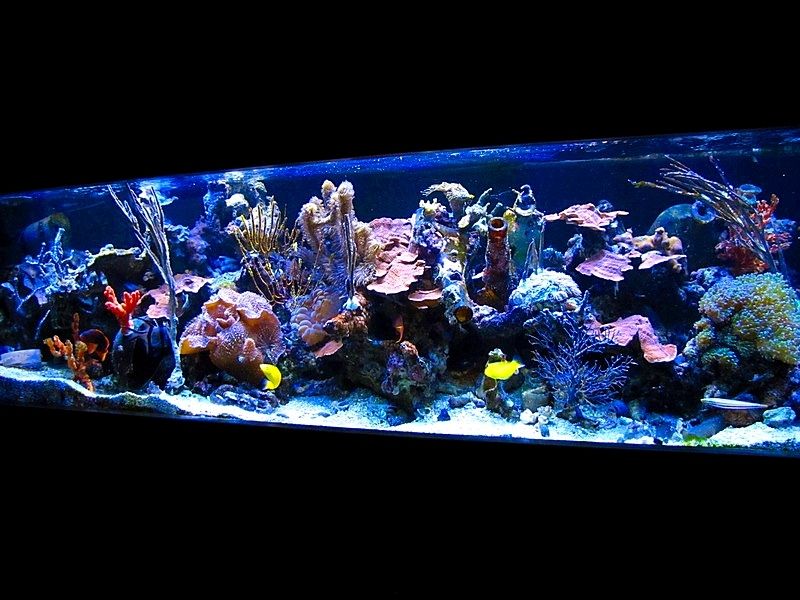Paul B
NJRC Member
For a couple of months my Reverse Under Gravel Filter has been backing up and I wasn't sure why.
I found out. I took a mirror and looked into the manifold that has three acrylic tubes coming out the bottom that feed the Reverse UG filter. That is fed by the algae scrubber screen on the right.
Water was filling the manifold which isn't good.
The reverse UG filter has been running for about 38 years and I don't remember ever cleaning the tubes but I could have in the 90s.
I saw that the tubes were completely filled with hard tubes and other growth preventing water flow.
I removed the clear manifold and noticed that one of the 1" tubes was loose.
I saw that it came apart right in the middle of the tank behind most of the rock structure with all the largest, oldest montipora and other corals.
I didn't really want to break them so while my fireclown was trying to sever off my hand I removed some large rocks in the back as well as a big bottle and other things I didn't know was in there.
(I can't see the back of my tank because it is built into a wall in a closet under stairs.)I managed to remove that part of the tube that went to the manifold so I could chop out the growth.
It seems when I built this I didn't install that tube in one piece, but instead I "spliced" it together with a piece of flexible hose which turned into glass in 38 years so it is brittle and came apart.
I managed to stick it back together and I made a "Rotor Router" snake to clean out the hard growth in the other two tubes and I pumped down water to push the rubble under the gravel.
I put everything back and all seems well. I would like it to run at least another 4 years. At that time the tank will be fifty years old and I may take it down. I am not exactly 20 years old any more and I travel more now and I know some day (hopefully not soon) I will croak and I don't want to leave this to anyone. I would like to donate it to someone who will know how to run it the way it is running which is different than most tanks.


I found out. I took a mirror and looked into the manifold that has three acrylic tubes coming out the bottom that feed the Reverse UG filter. That is fed by the algae scrubber screen on the right.
Water was filling the manifold which isn't good.
The reverse UG filter has been running for about 38 years and I don't remember ever cleaning the tubes but I could have in the 90s.
I saw that the tubes were completely filled with hard tubes and other growth preventing water flow.
I removed the clear manifold and noticed that one of the 1" tubes was loose.
I saw that it came apart right in the middle of the tank behind most of the rock structure with all the largest, oldest montipora and other corals.
I didn't really want to break them so while my fireclown was trying to sever off my hand I removed some large rocks in the back as well as a big bottle and other things I didn't know was in there.
(I can't see the back of my tank because it is built into a wall in a closet under stairs.)I managed to remove that part of the tube that went to the manifold so I could chop out the growth.
It seems when I built this I didn't install that tube in one piece, but instead I "spliced" it together with a piece of flexible hose which turned into glass in 38 years so it is brittle and came apart.
I managed to stick it back together and I made a "Rotor Router" snake to clean out the hard growth in the other two tubes and I pumped down water to push the rubble under the gravel.
I put everything back and all seems well. I would like it to run at least another 4 years. At that time the tank will be fifty years old and I may take it down. I am not exactly 20 years old any more and I travel more now and I know some day (hopefully not soon) I will croak and I don't want to leave this to anyone. I would like to donate it to someone who will know how to run it the way it is running which is different than most tanks.



